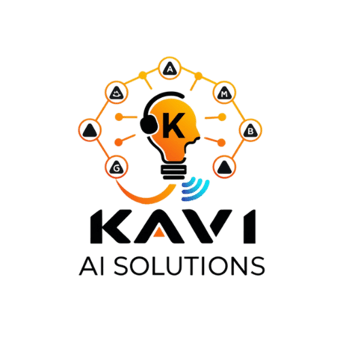From Turing's Dream to Your Daily Life: The Inspiring Journey of AI and Its Positive Impact
Artificial Intelligence (AI). It's a term that permeates conversations today, powering everything from your smartphone's assistant to complex business solutions. But have you ever paused to consider how we got here? AI didn't just appear overnight; it's the culmination of decades of dreams, breakthroughs, setbacks, and relentless innovation. Understanding this journey helps us appreciate not only how far we've come but also the incredible potential AI holds to positively shape our future.
3/25/20253 min read
Artificial Intelligence (AI). It's a term that permeates conversations today, powering everything from your smartphone's assistant to complex business solutions. But have you ever paused to consider how we got here? AI didn't just appear overnight; it's the culmination of decades of dreams, breakthroughs, setbacks, and relentless innovation. Understanding this journey helps us appreciate not only how far we've come but also the incredible potential AI holds to positively shape our future.
The Genesis: Dreaming of Thinking Machines
The seeds of AI were sown long before computers existed, rooted in philosophical questions about intelligence and consciousness. However, the modern story truly begins in the mid-20th century. Visionaries like Alan Turing, with his groundbreaking work on computation and the famous "Turing Test" (a test of a machine's ability to exhibit intelligent behavior indistinguishable from that of a human), laid the theoretical groundwork.
The term "Artificial Intelligence" itself was coined at the pivotal Dartmouth Workshop in 1956. This gathering of brilliant minds marked the official birth of AI as a field of research, fueled by the optimistic belief that machines could simulate aspects of human intelligence within a generation. Early efforts focused on problem-solving, game playing (like chess), and symbolic reasoning.
The Cycles of Progress: AI Winters and Springs
The path forward wasn't linear. The initial excitement led to periods of intense research and funding, but the immense complexity of replicating human intelligence soon became apparent. Limited computing power and data, coupled with overly ambitious promises, led to several "AI Winters" – periods where funding dried up, and progress seemed to stall.
However, the dream never died. Each "winter" was followed by a "spring," often driven by:
Exponential Growth in Computing Power: Moore's Law delivered faster, cheaper processors.
The Rise of the Internet & Big Data: Unprecedented amounts of data became available to train AI models.
Algorithmic Breakthroughs: New approaches like Machine Learning (ML) emerged, allowing systems to learn from data without explicit programming. Expert systems also found practical, albeit limited, applications.
The Modern AI Renaissance: Deep Learning Takes Center Stage
The last 15-20 years have witnessed an AI renaissance, largely propelled by the success of Deep Learning, a subfield of ML inspired by the structure of the human brain (neural networks). Combined with powerful GPUs (graphics processing units) initially designed for gaming, and vast datasets, deep learning has achieved remarkable feats in areas previously thought impossible for machines:
Computer Vision: AI can now "see" and interpret images and videos with astounding accuracy (facial recognition, object detection).
Natural Language Processing (NLP): Machines can understand, interpret, and generate human language (translation, chatbots, sentiment analysis).
Recommendation Engines: AI powers the personalized suggestions we get on platforms like Netflix, Amazon, and Spotify.
AI's Positive Footprint on Our Lives
This technological evolution isn't just academic; it has tangible, positive impacts on our daily existence:
Unprecedented Convenience: Navigation apps finding the fastest route, smart assistants managing our schedules, spam filters cleaning our inboxes – AI handles countless tasks, saving us time and effort.
Enhanced Personalization: From curated news feeds to tailored shopping experiences, AI helps deliver content and services more relevant to our individual needs and preferences.
Improved Health & Well-being: AI assists doctors in diagnosing diseases earlier and more accurately from medical scans, helps develop new drugs, and powers wearable devices that monitor our health.
Increased Safety & Security: AI contributes to safer driving through advanced driver-assistance systems, improves fraud detection in financial transactions, and enhances cybersecurity.
Breaking Down Barriers: Real-time translation tools connect people across language divides, while assistive technologies powered by AI empower individuals with disabilities.
Boosting Creativity: AI tools can assist artists, musicians, and writers, acting as creative partners or handling repetitive aspects of the creative process.
Connecting the Past to Your Business Future
This incredible journey, from theoretical concepts to practical, life-enhancing tools, is precisely what enables solutions like those offered by KAVI AI SOLUTIONS today. The advancements in NLP fuel our intelligent chatbots, the power of ML allows our systems to learn and improve, and the focus on automation translates directly into increased efficiency and better customer experiences for your business.
Understanding the history of AI reveals its resilience and its ever-increasing capacity to solve real-world problems. It's not just a buzzword; it's a powerful, evolving technology that is fundamentally improving how we live and work.
At KAVI AI SOLUTIONS, we're passionate about harnessing this power responsibly and effectively, making the benefits of AI accessible to businesses ready to embrace the future.
Empower
Innovative solutions for your digital growth journey.
Connect
Transform
info@kaviaisolutions.io
© 2025. All rights reserved.
